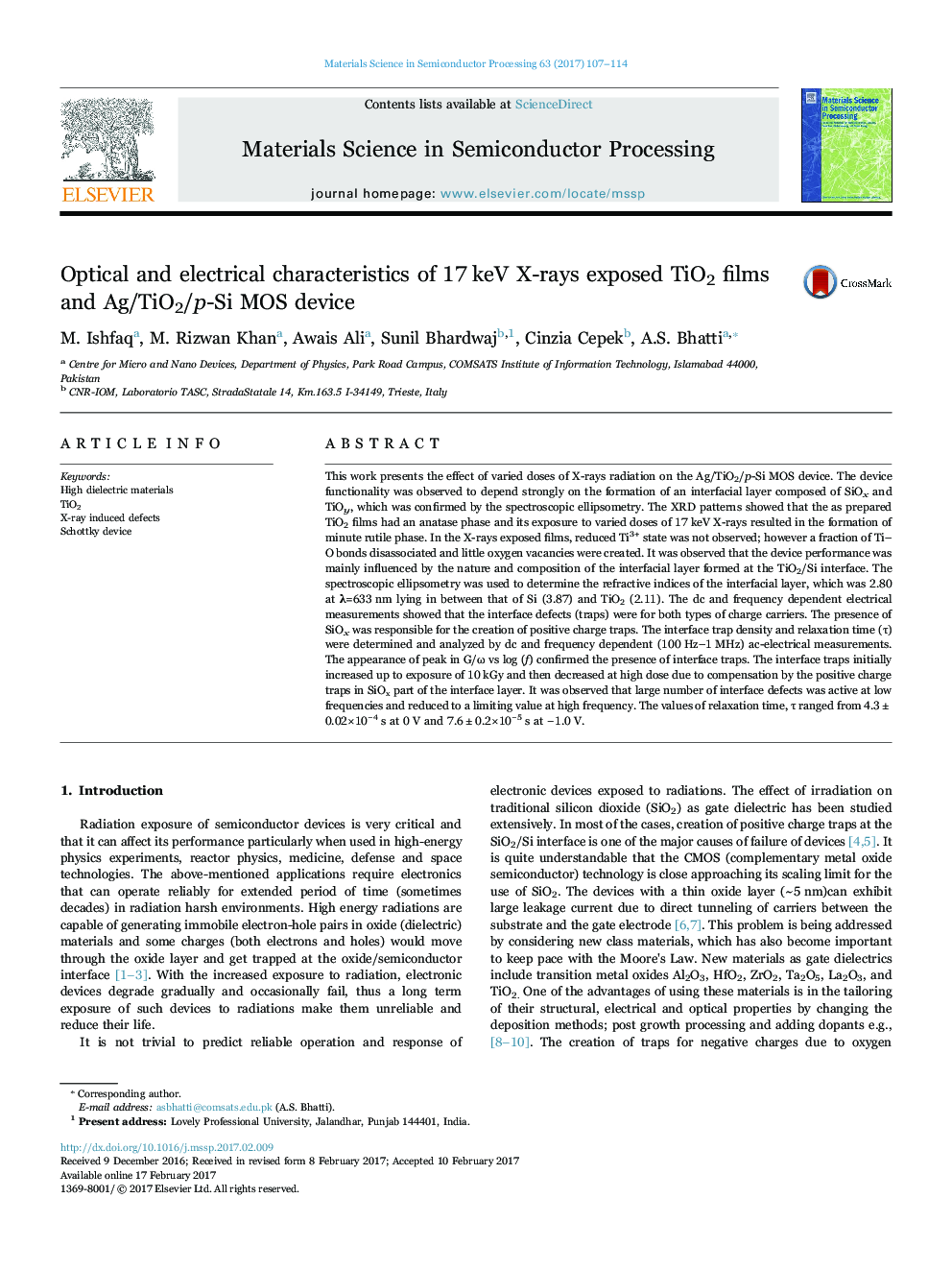| کد مقاله | کد نشریه | سال انتشار | مقاله انگلیسی | نسخه تمام متن |
|---|---|---|---|---|
| 5006132 | 1461384 | 2017 | 8 صفحه PDF | دانلود رایگان |
عنوان انگلیسی مقاله ISI
Optical and electrical characteristics of 17Â keV X-rays exposed TiO2 films and Ag/TiO2/p-Si MOS device
دانلود مقاله + سفارش ترجمه
دانلود مقاله ISI انگلیسی
رایگان برای ایرانیان
موضوعات مرتبط
مهندسی و علوم پایه
سایر رشته های مهندسی
مهندسی برق و الکترونیک
پیش نمایش صفحه اول مقاله

چکیده انگلیسی
This work presents the effect of varied doses of X-rays radiation on the Ag/TiO2/p-Si MOS device. The device functionality was observed to depend strongly on the formation of an interfacial layer composed of SiOx and TiOy, which was confirmed by the spectroscopic ellipsometry. The XRD patterns showed that the as prepared TiO2 films had an anatase phase and its exposure to varied doses of 17 keV X-rays resulted in the formation of minute rutile phase. In the X-rays exposed films, reduced Ti3+ state was not observed; however a fraction of Ti-O bonds disassociated and little oxygen vacancies were created. It was observed that the device performance was mainly influenced by the nature and composition of the interfacial layer formed at the TiO2/Si interface. The spectroscopic ellipsometry was used to determine the refractive indices of the interfacial layer, which was 2.80 at λ=633 nm lying in between that of Si (3.87) and TiO2 (2.11). The dc and frequency dependent electrical measurements showed that the interface defects (traps) were for both types of charge carriers. The presence of SiOx was responsible for the creation of positive charge traps. The interface trap density and relaxation time (Ï) were determined and analyzed by dc and frequency dependent (100 Hz-1 MHz) ac-electrical measurements. The appearance of peak in G/Ï vs log (f) confirmed the presence of interface traps. The interface traps initially increased up to exposure of 10 kGy and then decreased at high dose due to compensation by the positive charge traps in SiOx part of the interface layer. It was observed that large number of interface defects was active at low frequencies and reduced to a limiting value at high frequency. The values of relaxation time, Ï ranged from 4.3±0.02Ã10â4 s at 0 V and 7.6±0.2Ã10â5 s at â1.0 V.
ناشر
Database: Elsevier - ScienceDirect (ساینس دایرکت)
Journal: Materials Science in Semiconductor Processing - Volume 63, 1 June 2017, Pages 107-114
Journal: Materials Science in Semiconductor Processing - Volume 63, 1 June 2017, Pages 107-114
نویسندگان
M. Ishfaq, M. Rizwan Khan, Awais Ali, Sunil Bhardwaj, Cinzia Cepek, A.S. Bhatti,